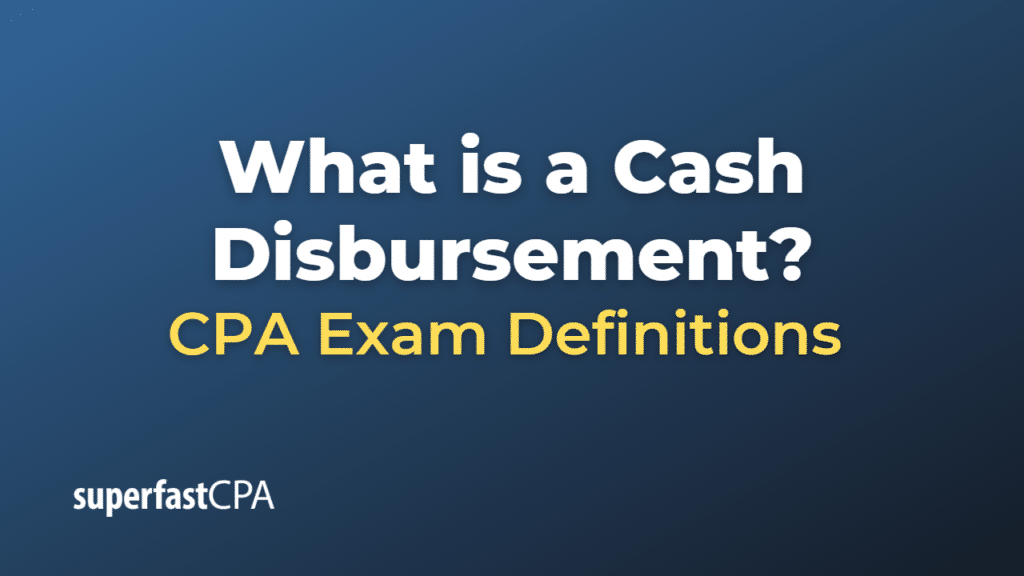Cash Disbursement
A cash disbursement, also known as a cash payment or cash outflow, is the process of transferring funds from a business or an individual to another party to fulfill a financial obligation or make a purchase. Cash disbursements can occur in various forms, such as cash, checks, electronic fund transfers, or credit card payments.
In accounting, cash disbursements are recorded as expenses or reductions in assets on the company’s books. They are typically documented in a cash disbursements journal or a general ledger, which helps businesses track and manage their outgoing payments.
Examples of cash disbursements include:
- Payment to suppliers for goods and services
- Salaries and wages paid to employees
- Rent or mortgage payments for office space or other properties
- Utility bills, such as electricity, water, or internet services
- Loan or interest payments on outstanding debts
- Dividends paid to shareholders
- Taxes paid to local, state, or federal governments
- Charitable donations or sponsorships
Effective cash disbursement management is essential for businesses to maintain liquidity, control expenses, and ensure timely payments to suppliers, employees, and other stakeholders. This process often involves establishing a cash disbursement schedule, setting up internal controls, and monitoring cash flow to prevent fraud, errors, and cash shortages.
Example of Cash Disbursement
Let’s consider a hypothetical example of a small business, “Cafe Delight,” which needs to manage its cash disbursements during the month of May.
The owner of Cafe Delight has to make several cash disbursements to cover various expenses and financial obligations. Here’s a summary of the payments:
- Payment to coffee bean supplier: $5,000
- Wages for the employees: $8,000
- Rent for the cafe premises: $3,000
- Electricity and water bills: $500
- Internet service: $100
- Loan payment for the espresso machine: $1,000
- Marketing expenses: $1,500
To effectively manage these cash disbursements, the owner creates a schedule for the month, outlining the due dates and amounts for each payment:
- May 1: Rent payment – $3,000
- May 5: Wages for employees – $8,000
- May 7: Payment to coffee bean supplier – $5,000
- May 10: Electricity and water bills – $500
- May 15: Internet service – $100
- May 20: Loan payment for the espresso machine – $1,000
- May 25: Marketing expenses – $1,500
By having a schedule in place, the owner can ensure that all payments are made on time and that there is sufficient cash available to cover each disbursement. This helps Cafe Delight maintain good relationships with suppliers and employees, avoid late fees or penalties, and manage its overall cash flow efficiently.
In accounting, these cash disbursements would be recorded as expenses or reductions in assets on the company’s books, helping the owner to keep track of outgoing payments and monitor the overall financial health of the business.













